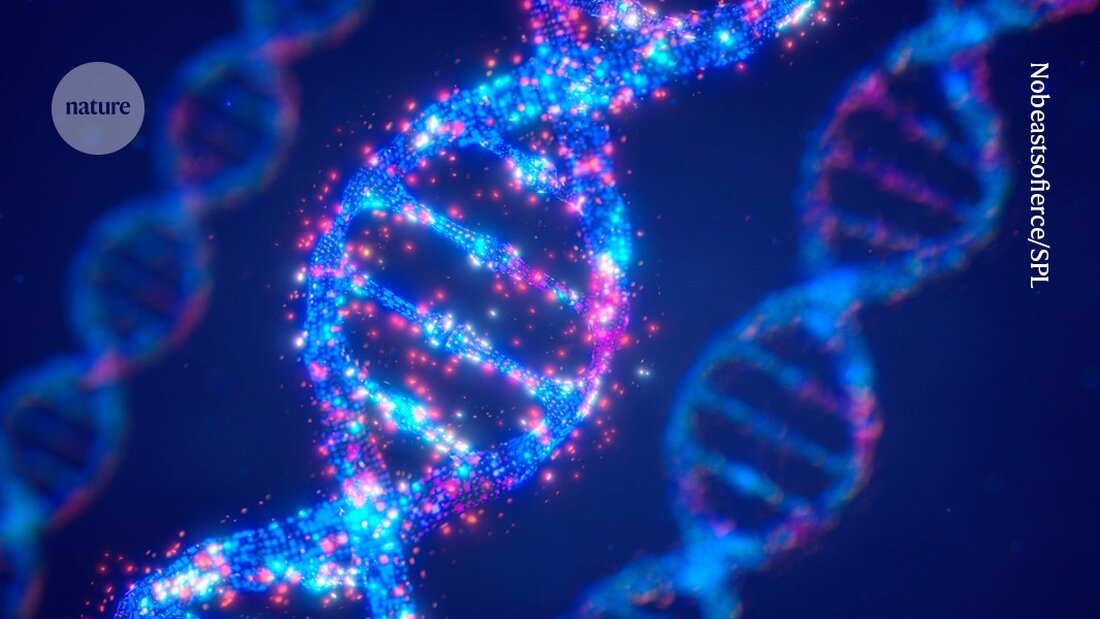DNA stores data in bits after epigenetic upgrade
A new process makes it possible to use DNA as binary storage. Researchers at Peking University show how epigenetic changes can efficiently store data.

DNA stores data in bits after epigenetic upgrade
DNA has been around for thousands of years humanity's preferred data storage facility. Tough and compact, it is so information dense that one gram is enough data for 10 million hours of high resolution video can save.
But there is always room for improvement.
A novel method now makes it possible to store information in DNA as binary code - the same 0s and 1s used by conventional computers. This method could one day be cheaper and faster than encoding information in the sequence of building blocks that make up DNA, which is currently used by cells and most efforts to do so Storing artificially generated data corresponds to the method used.
The method is so simple that 60 volunteers from different fields were able to use it to save the text of their choice. Many of them initially didn't believe the technique would work, says Long Qian, a computational synthetic biologist at Peking University in Beijing and an author of the study 1, which describes the technology.
“Once they saw the sequence and got the correct lines back, they started to believe they could actually do it,” she explains. The study was published today in Nature.
Short storage
This technique is just one of many Trying to turn DNA into a sustainable alternative to traditional, electronic storage options that cannot keep pace with the world's increasing data production. “We are reaching physical limits,” says Nicholas Guise, a physicist at the Georgia Tech Research Institute in Atlanta. “And we are constantly generating more data.”
The enormous storage capacity of DNA makes it an attractive alternative. Furthermore, can DNA, when protected from moisture and ultraviolet light, can last for hundreds of thousands of years. In contrast, electronic hard drives need to be replaced every few years or data becomes corrupted.
The most obvious way to store information in DNA is to insert the data into the DNA sequence, a process that requires a strand of DNA to be synthesized from scratch. This approach is slow and many orders of magnitude more expensive than electronic data storage, explains Albert Keung, a synthetic biologist at North Carolina State University in Raleigh.
To develop a cheaper, faster way, Qian and her colleagues turned to it “Epigenome” – a variety of molecules that cells use to control gene activity, without modifying the DNA sequence itself. For example can so-called methyl groups are added to or removed from DNA to change their function.
Qian and her colleagues developed a system in which a series of short, prefabricated DNA "building blocks" - with or without methyl groups - could be added to a reaction vessel to form a growing DNA strand with the correct binary code. To retrieve the data, the researchers use a DNA sequencing technique, which can detect the methyl groups along the DNA strand. The results can be interpreted as a binary code, where the presence of a methyl group corresponds to 1 and the absence corresponds to 0.
Panda portrait in DNA
Because the technique uses pre-made DNA fragments, it could be further optimized to enable mass production, says Keung. This would make it much cheaper than synthesizing a tailor-made strand of DNA for each bit of information to be stored. The next step, Keung says, will be to see how well the system scales to accommodate large data sets.
As a step in this direction, Qian and her colleagues coded and read the instructions to create an image of a tiger from the Han Dynasty in ancient China and a colored image of a panda in lush greenery. The images were encoded in nearly 270,000 1s and 0s, or “bits.”
For now, the field needs to reduce costs before it can compete with electronic data storage, Guise says. “DNA storage still has a long way to go before it can become commercially relevant,” he says. “But there is a need for disruptive technology.”
-
Zhang, C. et al. Nature 634, 824–832 (2024).

 Suche
Suche
 Mein Konto
Mein Konto
